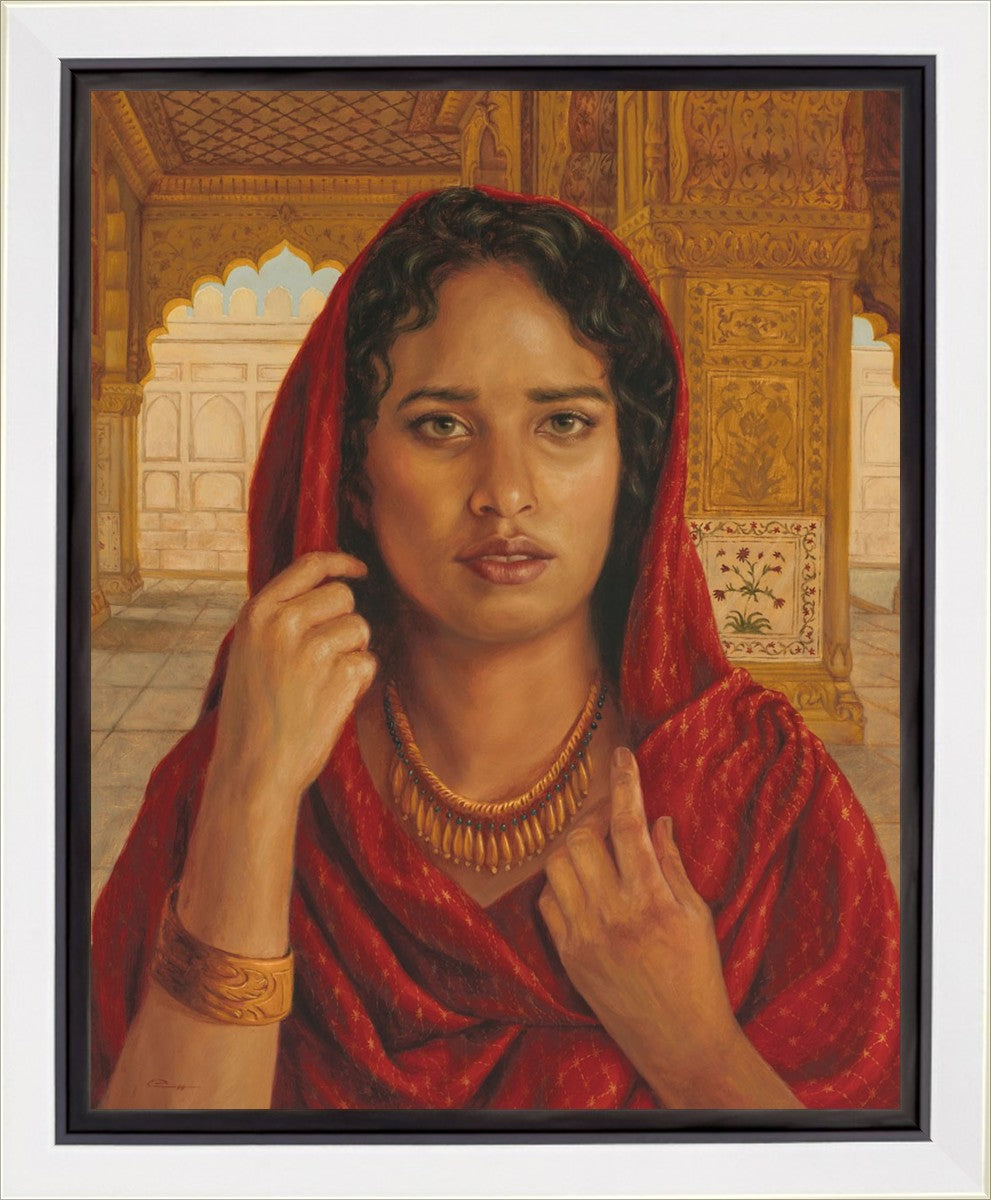My Blood, The blood of My People
My Blood, The blood of My People
SKU:EC1025923
Story Behind the Art
Story Behind the Art
In my recent reading of the Old Testament, I have been struck by the abundance of messianic symbols, allegories, and parallels. The story of Esther is no exception. In parallel to Christ, she offers her life in pursuit of the redemption of her people and ultimately plays the role of intercessor in their salvation. This painting portrays her draped in a rich red shawl, a symbol of her willingness to offer her blood for her people. It is embroidered with tiny gold stars which offer a multiplicity of symbolism. First and foremost they represent the Jewish nation, multiplied like the starts of the heavens according to Abrahamic prophecy. They aslo reference the etymology of her Persian name, Esther, wich is related to the word "setarah" or star. Around her neck she wears a queenly necklace of gold, sapphires, and pearls, Biblical symbols of heaven and hidden wisdom. In Judaic color theory red, white and blue represents judgement, kindness, and mercy. On her wrist she wears a gold bangle embossed with the crest of the Achaemenid dynasty, a hint at the darker side of this story that is barely or never addressed in Christian tradition. While it is not explicitly stated that Esther was presented to and married to Xerxes/Ahasuerus with out her consent, historical context suggests that is by far the most likely of the two scenarios. Even if there was consent, the power difference makes that consent negligible. At the end of the day she was another sparkling jewel, a prized possesion, of an emperor.
About the Artist
About the Artist
Esther Hi’ilani Candari is primarily a figurative artist who explores concepts such as multiracial identity, gender and the female gaze in the context of religion, and the connections between ecology, culture, and sense of place. Much of her work draws upon her experiences growing up in Hawai’i in an Asian American mixed-race household. She has a BFA from BYU-H, an MFA from Liberty University, and has studied at the New York Academy of Art. In addition to her studio work, she owns and directs The Compass Gallery, serves as the art editor for Wayfare magazine, and serves on the Advisory Board for The Faith Matters Foundation. She lives in Utah County with her husband, two rescue dogs, and an ever-growing collection of houseplants.
Shipping & Returns
Shipping & Returns
If your order has a time sensitivity that requires expedited shipping, please Contact Us so that we can confirm our ability to meet your time requirements.
We use real-time shipping on this site. The shipping charge on your order is determined at order placement using UPS and USPS shipping rate calculators. If you feel that the shipping charges are incorrect, please Contact Us and let us know of your situation. A real person (not a calculator) will respond during business hours and resolve your issue prior to shipment.
For more information, please refer to the following policies:
Couldn't load pickup availability















































































































